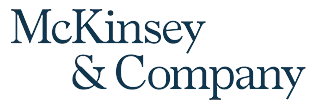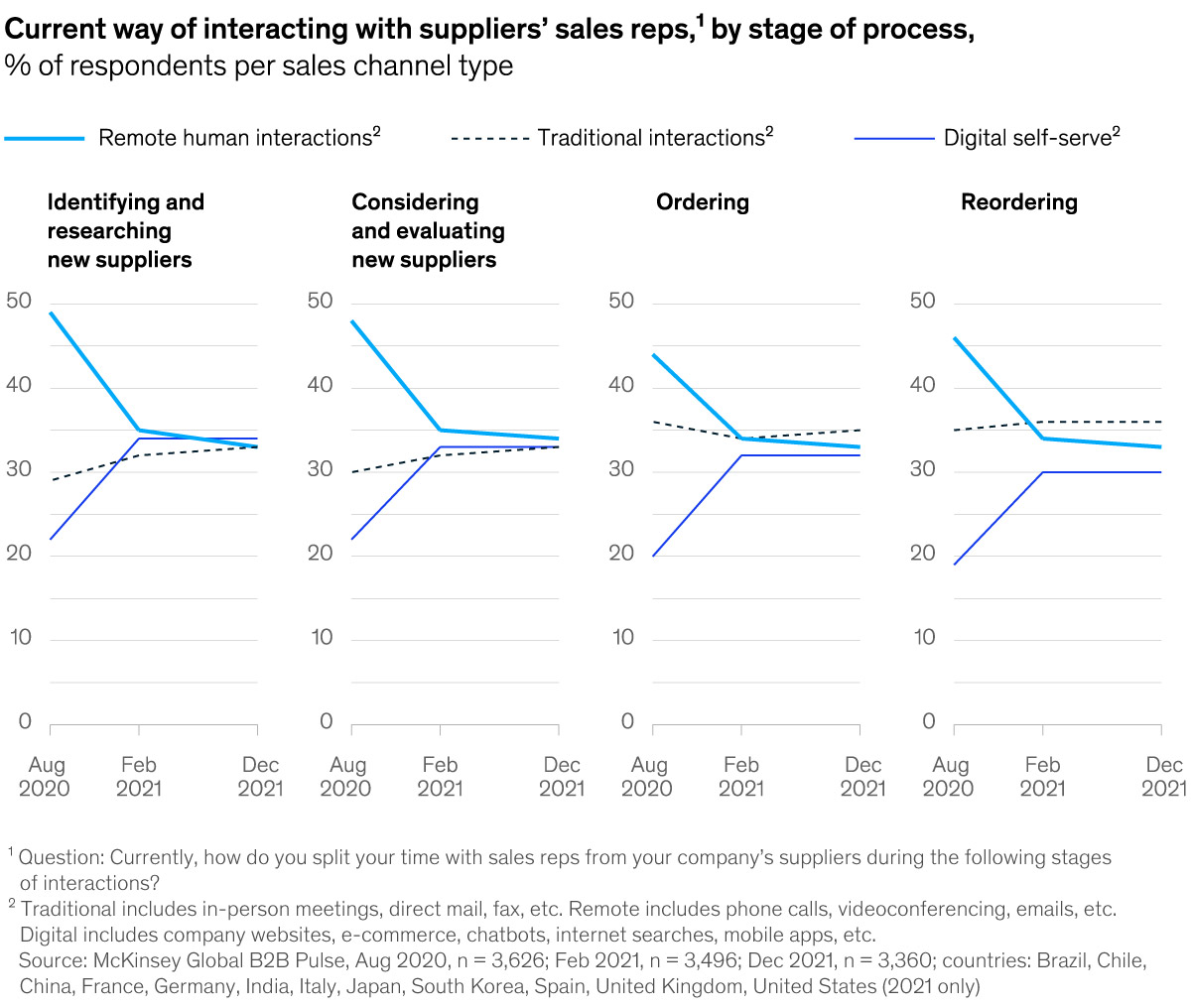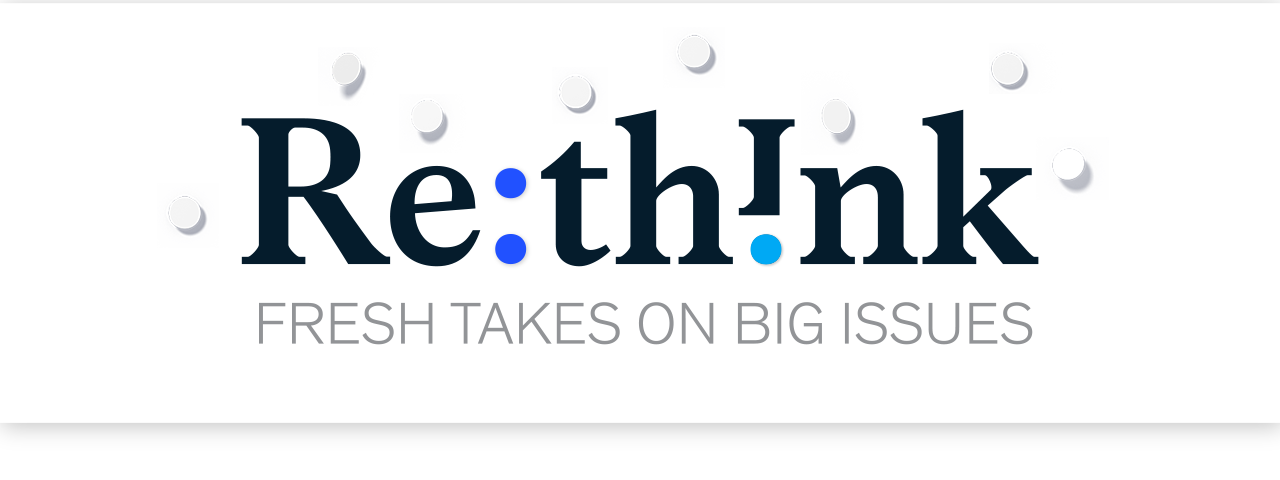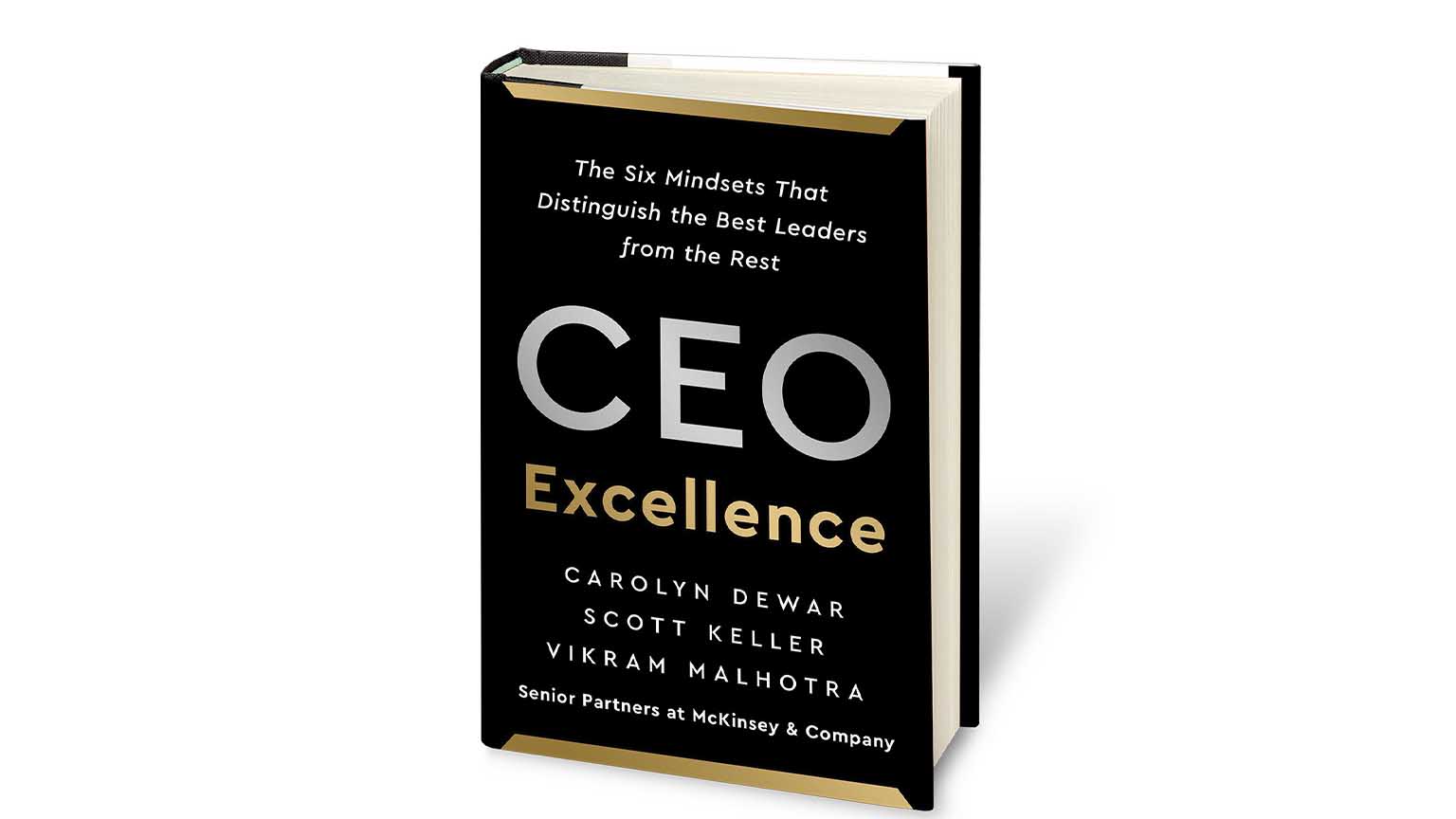Archives
- By thread 5416
-
By date
- June 2021 10
- July 2021 6
- August 2021 20
- September 2021 21
- October 2021 48
- November 2021 40
- December 2021 23
- January 2022 46
- February 2022 80
- March 2022 109
- April 2022 100
- May 2022 97
- June 2022 105
- July 2022 82
- August 2022 95
- September 2022 103
- October 2022 117
- November 2022 115
- December 2022 102
- January 2023 88
- February 2023 90
- March 2023 116
- April 2023 97
- May 2023 159
- June 2023 145
- July 2023 120
- August 2023 90
- September 2023 102
- October 2023 106
- November 2023 100
- December 2023 74
- January 2024 75
- February 2024 75
- March 2024 78
- April 2024 74
- May 2024 108
- June 2024 98
- July 2024 116
- August 2024 134
- September 2024 130
- October 2024 141
- November 2024 171
- December 2024 115
- January 2025 216
- February 2025 140
- March 2025 220
- April 2025 233
- May 2025 239
- June 2025 303
- July 2025 230
-
Working moms are burnt out, and Girls Who Code’s Reshma Saujani knows why.
Readers & Leaders
Support working parents THIS MONTH'S PAGE-TURNERS ON BUSINESS AND BEYOND
When schools and day-care centers shut down at the peak of the pandemic, moms stepped up. Between supervising remote school, doing housework, and preparing lunch, working mothers were now balancing two jobs and lots of cognitive labor, often causing their paying jobs to suffer. In this edition of Readers & Leaders—McKinsey’s monthly newsletter on the books business leaders are reading—catch a discussion on working-mother burnout with Reshma Saujani, interviews about why work isn’t working for women of color and how to achieve optimum performance at work and in life, and the month’s bestselling business books, prepared exclusively for McKinsey by NPD BookScan. Itching for more good reads? Check out McKinsey on Books for the latest, and to get Readers & Leaders in your inbox monthly, click here to subscribe.
AUTHOR TALKS
Millions of mothers have been pushed out of the workforce since the pandemic began, either downshifting to part-time work or leaving their jobs altogether to care for their children—and at disproportionate rates to their male counterparts. In a recent edition of Author Talks, we sat down with Reshma Saujani, founder of Girls Who Code, to discuss double standards in caretaking and more from her new book Pay Up: The Future of Women and Work (and Why It’s Different Than You Think).
“This wasn’t just a pandemic story. For far too long, we have been juggling too much. We were sold a big corporate lie: that we could ‘girl boss’ our way and ‘lean in’ our way to the top. We have always participated in a workforce not only not built for us but that has been stacked against us. I think moms are tired. I think we’re burned out. I think we’re angry.” Watch the full interview.IT BEARS REPEATING
—Scott Keller, McKinsey senior partner and coauthor of CEO Excellence: The Six Mindsets That Distinguish the Best Leaders from the Rest, in a video on how his son impacted his life’s work.
IN CASE YOU MISSED IT
Deepa Purushothaman discusses why work isn’t working for women of color: “The idea that corporate America is a meritocracy really sets women of color up to struggle. It really sets us up to believe that we have to perform and behave in a certain way to rise, and I think that doesn’t allow us to be our full selves. It doesn’t allow us to bring the unique properties that we have and the power that we have to the workplace.’” Watch the full interview.
Rich Diviney shares SEAL team strategies for optimum performance: “In the team setting, it’s not at all about competition. In fact, it’s the opposite; it’s about vulnerability. The best—the highest performing—SEAL teams, for example, all did what we were able to do because we were all incredibly open to displaying our vulnerability.” Watch the full interview.
Catherine Price wants you to go have fun: “We typically think of fun as something that we can only have or experience when things are already going well, but what I’ve come to realize is that the opposite is true. Actually, fun can boost our resilience and our spirits in a way that makes it easier for us to cope with whatever life may throw our way, whether it’s a global pandemic or anything else.” Watch the full interview.BUSINESS BESTSELLERS TOP
8
Welcome the first days of spring with this month’s top business bestsellers in eight categories, prepared exclusively for McKinsey by NPD BookScan, and explore the full lists on McKinsey on Books.
BUSINESS OVERALL
Atomic Habits: An Easy & Proven Way To Build Good Habits & Break Bad Ones by James Clear (Penguin Group USA)
BUSINESS HARDCOVER
Atomic Habits: An Easy & Proven Way To Build Good Habits & Break Bad Ones by James Clear (Penguin Group USA)
DECISION MAKING
Blink: The Power of Thinking Without Thinking by Malcolm Gladwell (Hachette Book Group)
ECONOMICS
The Voltage Effect: How to Make Good Ideas Great and Great Ideas Scale by John A. List (Random House)
ORGANIZATIONAL BEHAVIOR
Atomic Habits: An Easy & Proven Way To Build Good Habits & Break Bad Ones by James Clear (Penguin Group USA)
WORKPLACE CULTURE
Who Moved My Cheese?: An Amazing Way to Deal with Change in Your Work and in Your Life by Spencer Johnson (Penguin Group USA)
DIVERSITY & INCLUSION
Caste (Oprah's Book Club): The Origins of Our Discontents by Isabel Wilkerson (Random House)
SUSTAINABILITY
Net Positive: How Courageous Companies Thrive by Giving More Than They Take by Paul Polman and Andrew Winston (Harvard Business Review Press)
BOOKMARK THIS
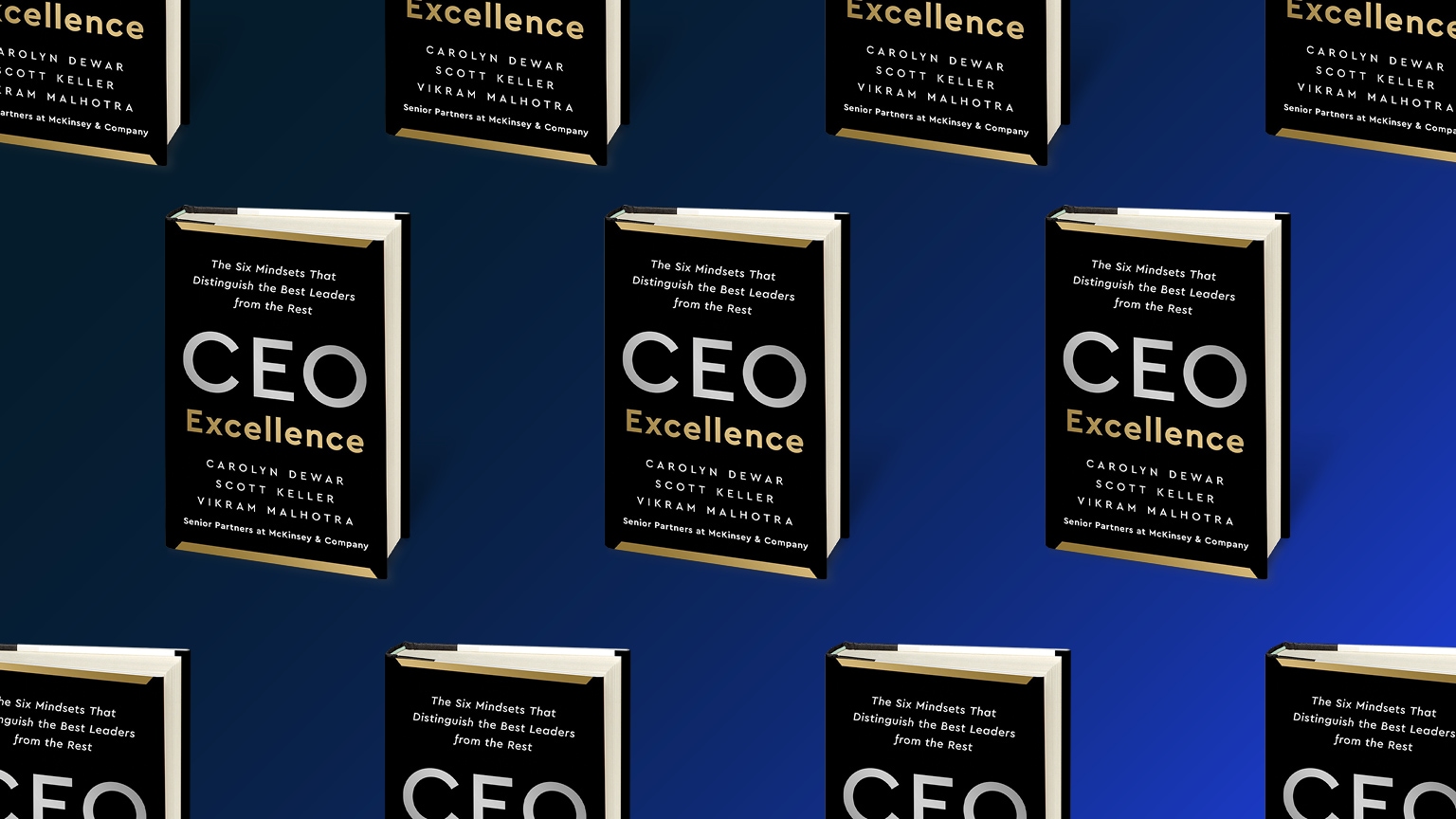
One book. Sixty-seven stories of extraordinary leadership
A new McKinsey book, CEO Excellence, reveals the six mindsets common among extraordinary leaders and shares practices you can adopt no matter where you sit in your organization.
The McKinsey Download Hub
Download McKinsey’s signature reports and special collections on the management issues that matter, from leading through the COVID-19 crisis to managing risk and digitizing operations.

The McKinsey Crossword: “Ouch!”
25 across: Persuasion by means of moral pressure. Can you solve it?
If you’d like to propose a book or author for #AuthorTalks, please email us at Author_Talks@Mckinsey.com. Due to the high volume of requests, we will respond only to those being considered.
—Edited by Molly Liebergall, an editor in McKinsey's New York office
Share these insights
Did you enjoy this newsletter? Forward it to colleagues and friends so they can subscribe too.
Was this issue forwarded to you? Sign up for it and sample our 40+ other free email subscriptions here.
This email contains information about McKinsey's research, insights, services, or events. By opening our emails or clicking on links, you agree to our use of cookies and web tracking technology. For more information on how we use and protect your information, please review our privacy policy.
You received this email because you subscribed to the Readers & Leaders newsletter.
Copyright © 2022 | McKinsey & Company, 3 World Trade Center, 175 Greenwich Street, New York, NY 10007
by "McKinsey Readers & Leaders" <publishing@email.mckinsey.com> - 11:49 - 26 Mar 2022 -
Forecasting the future of stores
the Daily read
Look ahead .
Share this email 



AN ARTICLE A DAY, PICKED BY OUR EDITORS 
Do you prefer shopping online or in physical stores? Though online shopping has really taken off in recent years, brick-and-mortar stores are not going anywhere. In fact, in 2021, US retailers announced approximately twice as many store openings as store closings. Retailers who want their physical stores to remain relevant should pay attention to the changing needs of their customers and the omnichannel experience. A new episode of McKinsey on Consumer and Retail podcast explores the future of stores and the five things to get right. — Babi Oloko, digital editor, New York 
Forecasting the future of stores Shoppers’ behaviors and expectations have changed dramatically—and continue to evolve. If retailers want to keep their physical stores relevant, here are five things they’ll need to get right. Look ahead 

Quote of the Day —Jonathan Woetzel, senior partner, on his experience writing a book in the latest episode of My Rookie Moment 
Chart of the Day 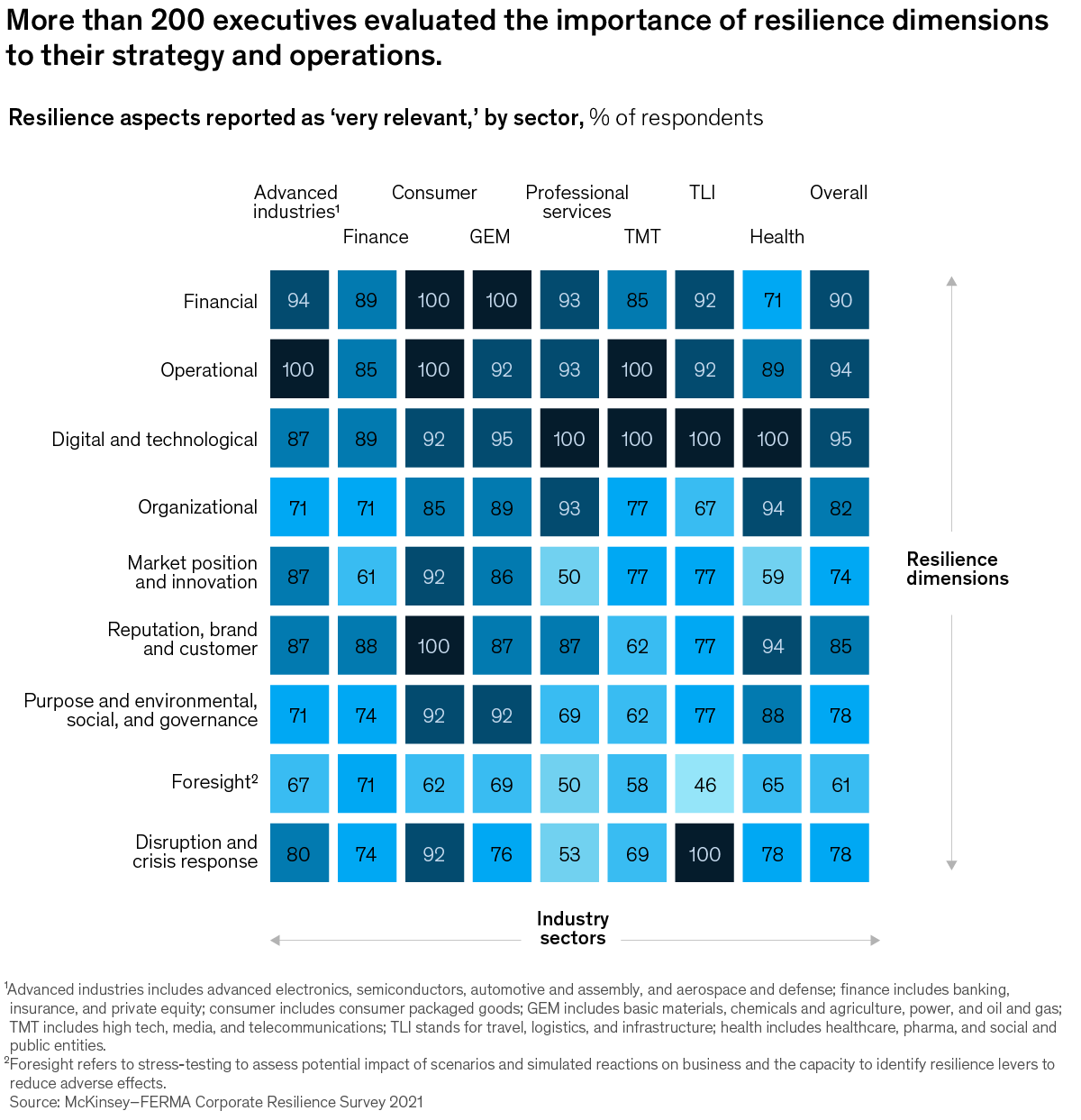
See today’s chart 
Also New 

Signed, sealed, and delivered: Unpacking the cross-border parcel market’s promise As e-commerce continues to fuel cross-border package deliveries around the world, what should logistics providers pay attention to? Watch your mailbox 


How American Family Insurance is investing in the agency channel As insurers rethink agent relationships, American Family Insurance is looking ahead, investing in digital tools and solutions that help agencies stay on top of trends and changing customer needs. Investing in the future 


Programmatic M&A: Winning in the new normal How to successfully source and execute a string of deals that lead to the creation of a new business. Understand the approach 


Follow our thinking 



Share these insights Did you enjoy this newsletter? Forward it to colleagues and friends so they can subscribe too.
Was this issue forwarded to you? Sign up for it and sample our 40+ other free email subscriptions here.This email contains information about McKinsey’s research, insights, services, or events. By opening our emails or clicking on links, you agree to our use of cookies and web tracking technology. For more information on how we use and protect your information, please review our privacy policy. You received this email because you subscribed to the Daily Read newsletter. Manage subscriptions | Unsubscribe Copyright © 2022 | McKinsey & Company, 3 World Trade Center, 175 Greenwich Street, New York, NY 10007
by "McKinsey Daily Read" <publishing@email.mckinsey.com> - 06:23 - 25 Mar 2022 -
Will ‘FemTech’ make healthcare more female-focused? It’s trying.
The Shortlist
New solutions for an underserved population .
Share this email 



Our best ideas, quick and curated | march 25, 2022 View in browser 
This week, we look at the progress being made in women’s healthcare and the challenges that remain. Plus, the pandemic is changing workplace design, and Tech for Execs explains how reordering the steps in data processing—from ETL to ELT—opens up a world of possibility for your data. 
A gap in care. Women, one half of the world’s population, account for 80 percent of consumer purchasing decisions in the healthcare industry. Yet women’s health has been considered a niche market—a subset of healthcare. Approximately 1 percent of healthcare research and innovation is invested in female-specific conditions beyond oncology. Women have been underrepresented in medical trials, and the current global innovation pipeline reveals mismatches between health investments and health needs as they relate to women. Making strides. The good news is that recent advances in genomics, tissue engineering, and cell and gene therapy can be applied to underserved female-specific conditions, creating better health outcomes for women. Current gaps also present new opportunities for investors, companies, and other stakeholders across the healthcare ecosystem. Where does ‘FemTech’ fit in? The term, coined by the entrepreneur Ida Tin in 2016, encompasses software and tech solutions that improve healthcare for women, including maternal health, fertility, menopause, and general health conditions that affect them disproportionately or differently (such as osteoporosis or cardiovascular disease). Since then, FemTech has grown to include a broader range of tech-enabled, consumer-centric products. For example, at-home diagnostics, trackers, and wearables are helping women take greater charge of their health and health-related data. Clinical-diagnostics companies are addressing unmet medical needs in areas such as endometriosis and preterm birth. And more companies are focusing on culturally sensitive and tailored care for Black women, LGBTQ+ populations, and women in low- and middle-income countries. Beyond maternity. McKinsey recently analyzed 763 FemTech companies and found that that public awareness, company formation, and funding are surging as FemTech’s impact grows in more categories. For instance, Maven Clinic, which started as a virtual clinic in maternity care and expanded across the reproductive life cycle, is now valued at more than $1 billion. Solid momentum. Although FemTech companies currently receive just 3 percent of all digital-health funding, forecasts suggest opportunities for double-digit revenue growth. In our scan of hundreds of FemTech companies, we found that many are filling gaps not yet addressed by biopharma and device incumbents. In a short period, FemTech has already demonstrated impressive early wins, improving women’s lives in a way that redounds across society. An even greater disruption could be ahead. 
OFF THE CHARTS The B2B balancing act Although B2B companies have swung between e-commerce sales and field sales during the various stages of the COVID-19 pandemic, more buyers are now aiming for balance. A recent McKinsey Global Survey of thousands of B2B decision makers found that they have settled into using a mix of sales channels, although videoconferencing and emails have declined since the start of the pandemic. Check out our chart of the day here. 

INTERVIEW The rebirth of workplace design Diane Hoskins, co-CEO of Gensler, a global design and architecture firm, has been thinking about effective workplaces for decades. In a recent interview, she discusses how COVID-19 has disrupted workplace norms, such as forcing companies to rethink open-plan offices that had been a source of distraction and stress for many workers even before the pandemic. “From a design standpoint, there’s now a conversation about what is the role of workplaces at the individual-worker level and not just at the company, industry, or world level,” Hoskins said. “That is a very powerful shift. It opens the door to new solutions that may be unexpected.” 
MORE ON MCKINSEY.COM China tourism in 2022: Trends to watch in uncertain time | Although Chinese consumer confidence is growing, the desire for travel continues to show a pattern of spikes and dips, recent McKinsey surveys show. How AI-driven nudges can transform an operation’s performance | The right advice at just the right moment can make all the difference to employee satisfaction and performance. New AI-driven approaches are making truly personalized, real-time coaching a reality. The electric transport transition in sub-Saharan Africa | How will the trend toward electric mobility play out in the region, and what are the associated opportunities and challenges? We look at how governments, development partners, and the private sector can build the right ecosystem. 

TECH FOR EXECS The ABCs of ELT—or is it ETL? Our experts serve up a periodic look at the technology concepts leaders need to understand to help their organizations grow and thrive in the digital age. What it is. ELT or ETL, regardless of the order of letters, stands for extract, transform, and load. Collectively, these terms refer to the process of moving data from a source (such as a point-of-sale system) to an intermediate location (such as a relational database) from where the data can be accessed by an application (such as an AI-driven recommendation engine that suggests the next gadget you should buy based on your past purchases). Why it matters. The order of the letters does matter to businesses. Technology innovations enabled a shift from on-premise ETL to cloud-based ELT, which has arguably paved the way for virtually any company to create value from data—for example, by powering AI that’s now contributing significantly to bottom lines. From the 1970s through the early 2000s, a data point extracted from a source was sent to an intermediary system that transformed it into whatever format its database destination required—for example, sorting it into specific structured fields—and then forwarded it on to be loaded to that database (E-T-L). Along came a new suite of database systems in the 2000s to manage big (and messy) data in data lakes and enable E-L-T. Businesses could now extract data from multiple sources in their original, raw format and load them straight into a data lake where they could then be transformed into any number of formats needed by various applications—no intermediary data-preprocessing system required. An added bonus: data scientists could access and explore the raw data in the data lake as they worked on new applications, rather than having to tap back into varied and sundry source systems. Soon after, the cloud made ELT even easier—businesses could create data lakes and set up APIs (explained in last month’s Tech for Execs) to move the data from them to applications without having to worry about physical infrastructure. What the benefits are. ELT reduces cost and complexity and speeds up data processing. It also provides flexibility, since it allows easier movement of any data type—structured (tabular), unstructured (text, video), or anything in between—to multiple applications and enables data scientists and engineers to query and work with data in one place, fostering innovation. ETL isn’t dead. ELT hasn’t completely supplanted ETL, as there are cases where ETL is necessary. For example, it’s often needed when legacy infrastructure is in play or when it’s beneficial to use an intermediary system to anonymize personal data before sending it to a data lake (as opposed to configuring myriad guardrails for access to the data lake). Embrace cloudiness. Enabling faster and more flexible data management is one of the many benefits of moving to the cloud. If you don’t have a cloud strategy to drive business outcomes beyond IT cost savings, it’s time to craft one—a cloud transformation engine can help. What technology concepts would you like us to help explain next? Let us know. — Edited by Barbara Tierney Share this Tech For Execs 



BACKTALK Have feedback or other ideas? We’d love to hear from you. 
Tell us what you think 

Follow our thinking 



Share these insights Did you enjoy this newsletter? Forward it to colleagues and friends so they can subscribe too.
Was this issue forwarded to you? Sign up for it and sample our 40+ other free email subscriptions here.This email contains information about McKinsey’s research, insights, services, or events. By opening our emails or clicking on links, you agree to our use of cookies and web tracking technology. For more information on how we use and protect your information, please review our privacy policy. You received this email because you subscribed to The Shortlist newsletter. Manage subscriptions | Unsubscribe Copyright © 2022 | McKinsey & Company, 3 World Trade Center, 175 Greenwich Street, New York, NY 10007
by "McKinsey Shortlist" <publishing@email.mckinsey.com> - 02:10 - 25 Mar 2022 -
What’s next for streaming services?
McKinsey&Company
Consumers, creators, and content wars .

The future of streaming In the news • Shelling out for streaming. Thanks to streaming services, TV and film fans are binge-watching gobs of addictive, high-quality content. But with each platform creating its own slate of exclusive programming, the cost savings that led millions to cut ties with cable suddenly don’t seem so great. In fact, 43% of US adults said in a December survey that they were concerned about how much they spend on streaming subscriptions. That’s why the streaming industry’s next move may be to rebundle services. [Quartz] • In search of subscribers. In the first two years of the COVID-19 pandemic, people turned to streaming platforms like never before, with companies attracting millions of subscribers throughout 2020 and 2021. But a streaming giant’s lackluster forecast for new subscribers in the first quarter of 2022 seems to have dampened investor enthusiasm. To keep growing, media firms need to evolve: for example, by bundling streaming services with other perks such as merchandise or theme-park discounts. [CNBC] 
“The future growth in streaming is going to be outside the US. Folks are going to look at what they have built and try to figure out who can help make their footprint more global.” 
On McKinsey.com • ‘Content without borders.’ “Today, technology is shrinking the world, and it’s becoming one global marketplace for content,” says Jeffrey Hirsch, CEO of media and entertainment company Starz. That means that within the next decade, consumers across the globe will have access to entertainment made in any part of the world, predicts Hirsch. Over the next two to three years, competition will be stiffest in subscription video on demand (SVOD): research shows global consumers will have four to six SVOD services in their homes. • Stories from anywhere, available everywhere. Two technologies will accelerate the expansion of streaming services to all corners of the world, says Hirsch. Compression technology can be used to put high-definition movies and series onto mobile devices in a cost-effective way. Voice recognition will enable consumers to quickly choose a language for audio or subtitles. For more on how Starz works with creators, connects with streaming audiences, and makes diverse content pay off, read the full interview. — Edited by Belinda Yu Watch what happens 
Was this forwarded to you? Sign up here. Or send us feedback — we’d love to hear from you. 

Follow our thinking 


This email contains information about McKinsey’s research, insights, services, or events. By opening our emails or clicking on links, you agree to our use of cookies and web tracking technology. For more information on how we use and protect your information, please review our privacy policy. You received this email because you subscribed to the On Point newsletter. Manage subscriptions | Unsubscribe Copyright © 2022 | McKinsey & Company, 3 World Trade Center, 175 Greenwich Street, New York, NY 10007
by "McKinsey On Point" <publishing@email.mckinsey.com> - 12:40 - 25 Mar 2022 -
Private markets 2022: Private markets rally to new heights
the Daily read
Read the report .
Share this email 



AN ARTICLE A DAY, PICKED BY OUR EDITORS 
After a year of turbulence, private markets bounced back in 2021, driven heavily by private equity. Fundraising levels surpassed their prepandemic peak, and assets under management (AUM) reached an all-time high of $9.8 trillion in July—up from $7.4 trillion the year prior. But as the world gets a handle on the challenges of the pandemic, growing environmental and sociopolitical risks threaten to undermine the global economy’s rebound. Get familiar with potential obstacles to increased deal volumes, the efficiency gains posed by digital and analytical technologies, and more takeaways from our most recent edition of McKinsey’s Global Private Markets Review. Make sure to download the full report. — Molly Liebergall, digital editor, New York 
Private markets 2022: Private markets rally to new heights Updated annually, our Global Private Markets Review offers the best of our research and insight into private equity, real estate, debt, infrastructure, and natural resources. Explore the findings from our most recent report. Read the report 

Quote of the Day “The fact is, you can develop any attribute you want—you just can’t do it the same way as you can a skill. If you want to develop your patience, you have to find environments in which you can deliberately test and tease and develop your patience, whatever those environments might be.” —Rich Diviney, a retired Navy SEAL commander, on developing attributes in a recent Author Talks interview 
Chart of the Day 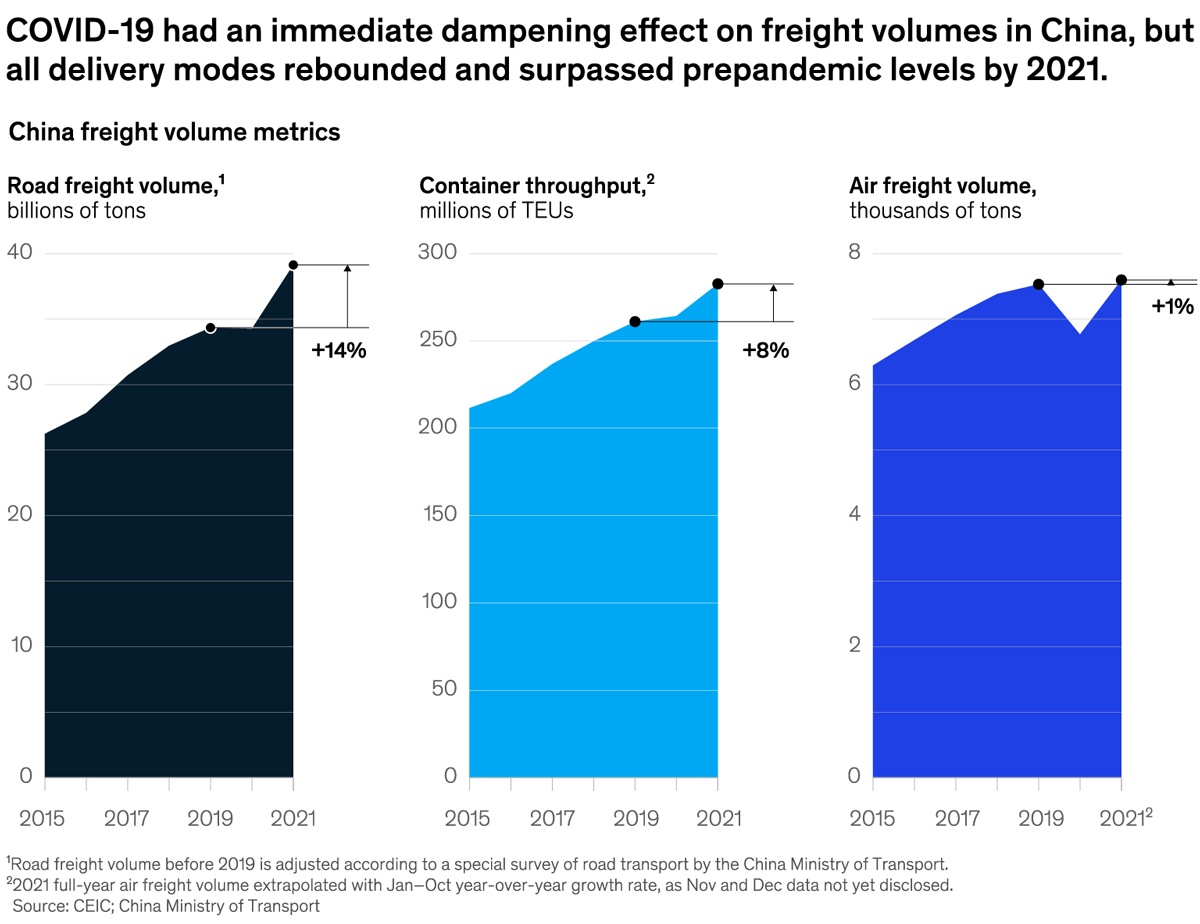
See today’s chart 
Also New 

The five zeros reshaping stores Consumers now demand much more than value and convenience—and tolerate fewer shortfalls. Understand customer priorities 


Author Talks: Where are the women who are missing from the workforce? Amid the pandemic, working mothers have had to downshift their careers to care for their children full time. Reshma Saujani says now is the time to change this dual burden. Give working moms a hand 


Putting the ‘A’ back in FP&A Next-level FP&A teams build more speed and flexibility into their own processes, which can trigger more efficient and effective operations throughout the company. Transform and grow 


Follow our thinking 



Share these insights Did you enjoy this newsletter? Forward it to colleagues and friends so they can subscribe too.
Was this issue forwarded to you? Sign up for it and sample our 40+ other free email subscriptions here.This email contains information about McKinsey’s research, insights, services, or events. By opening our emails or clicking on links, you agree to our use of cookies and web tracking technology. For more information on how we use and protect your information, please review our privacy policy. You received this email because you subscribed to the Daily Read newsletter. Manage subscriptions | Unsubscribe Copyright © 2022 | McKinsey & Company, 3 World Trade Center, 175 Greenwich Street, New York, NY 10007
by "McKinsey Daily Read" <publishing@email.mckinsey.com> - 06:09 - 24 Mar 2022 -
Importantes mises à jour de Kubernetes, New Relic à AWS Paris et bien plus encore!
New Relic
Quoi de Neuf ?New Relic sera présent au AWS Summit Paris le 12 avril 2022.Inscrivez-vous dès aujourd'hui et retrouvez-nous sur le stand G5!
Metric Aggregate Pruning : un nouvel outil pour la gestion de cardinalité des métriques
Aujourd'hui, nous annonçons la sortie de Metric Aggregate Pruning, un nouvel outil pour gérer la cardinalité des métriques dimensionnelles dans New Relic One.
La nouvelle expérience Kubernetes offerte par New Relic pour les applications déployées sur des clusters Kubernetes gérés
New Relic University
*Veuillez noter que ces formations seront dirigées en anglais.
30 mars 2022, 17h00-18h30 (heure de Paris)Cet atelier vous propose de mieux comprendre et utiliser les logs dans New Relic grâce à une présentation détaillée de leurs capacités.
29 mars 2022, 17h00- 18h30 (heure de Paris)Au cours de cette formation pratique, vous apprendrez à configurer et gérer les erreurs dans l'APM, le navigateur et les applications mobiles.Découvrez toutes les formations de NRU ici.
New Relic Dans L'Actu
>L'observabilité, instrument essentiel de stratégie de croissance des entreprises en 2022
>Le cloud en mode hybride reste une priorité pour les DSI
Vous voulez en savoir plus sur New Relic One ? Obtenir une démo >
Se désabonner ou Modifier l'adresse e-mail et les préférences.
Pour des informations sur nos pratiques concernant la vie privée, consultez notre politique de confidentialité.
New Relic, Inc. 31-36 Golden Ln, Dublin 8, D08 A5RV, Irlande | +353 (01) 687 6808 Afficher dans le navigateur
Ce message a été envoyé à info@learn.odoo.com à la suite de son inscription ou de son consentement à recevoir des communications marketing de New Relic.
© 2021 New Relic, Inc. Tous droits réservés.
Le logo de New Relic est une marque de commerce de New Relic, Inc.
This email was sent to info@learn.odoo.com. If you no longer wish to receive these emails, click on the following link: Unsubscribe
by "New Relic EMEA" <emeamarketing@newrelic.com> - 06:50 - 24 Mar 2022 -
BIAN + SmartBear: Enabling Open Banking Adoption and FinTech Innovation
Join us on April 8th to learn about SwaggerHub and BIAN!Hey Abul,
You’re invited to join our upcoming webinar, BIAN + SmartBear: Enabling Open Banking Adoption and FinTech Innovation.
APIs are the building blocks for innovation and interconnectivity for financial services organizations. However, rapid API growth has introduced fragmentation in how APIs are designed, built, and secured, making it difficult for financial institutions to easily realize the advantages of an open platform.
BIAN (Banking Industry Architecture Network) has set standards for financial APIs, easing integration challenges for users. Together with SwaggerHub, financial institutions can easily consume these standards and drive forward FinTech innovation.
Join us on April 8 at for an interactive event featuring Arnab Mitra, Program Manager at BIAN and Micheál Higgins, Senior Solutions Architect at SmartBear, as they discuss standards and governance trends and the rich benefits of partner ecosystem connectivity.
We hope to see you there—if you can’t make it, register anyway to receive a copy of the recording.
Molly Farmer
Senior Marketing Specialist at SmartBear
This email was sent to info@learn.odoo.com by SmartBear Software, 450 Artisan Way, Somerville, MA. 02145, 617.684.2600, www.smartbear.com. We hope you found this email of interest. However, we value your privacy. Please click here to Unsubscribe or manage mail preferences. Privacy Policy.
by "Molly from SmartBear" <swaggerhub-team@smartbearmail.com> - 01:55 - 24 Mar 2022 -
The rise of the FemTech unicorn
Intersection Subject Line
Plus: The mismatch between health investments and women’s health needs .
Share this email 



DELIVERING ON DIVERSITY, GENDER EQUALITY, AND INCLUSION 
In this issue, we look at FemTech—the definition and the latest developments—as well as the mismatch between health investments and women’s health needs. THE FACTS The market is there 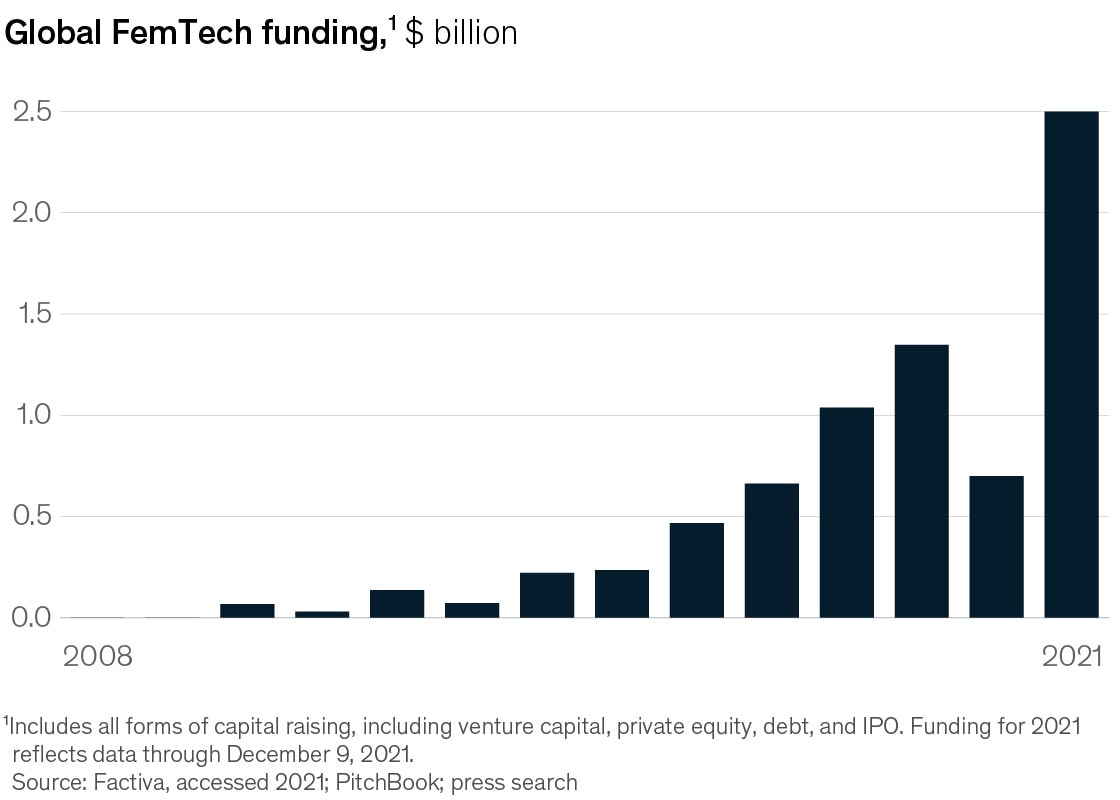
More than $2.5 billion—that’s how much funding the world’s FemTech companies received last year (including all forms of capital raising). What do we mean by “FemTech”? Coined in 2016 by Danish entrepreneur Ida Tin, the term has grown to encompass a range of tech-enabled, consumer-centric products and solutions. These span menstrual health, pelvic and sexual health, contraception, fertility, maternal health, and menopause, as well as a number of health conditions that affect women disproportionately or differently, such as osteoporosis or cardiovascular disease. FemTech funding is surging, but this is just the beginning. McKinsey analysis shows that there are plenty of white spaces in the start-up landscape, particularly in areas beyond fertility and maternal health. Some companies have already branched out: Maven Clinic, for example, started in maternity care and then expanded across the reproductive life cycle. The company was recently valued at more than $1 billion. “Is there really still an unmet need in this area?” Although that attitude may be surprising, that’s the kind of question that some FemTech entrepreneurs continue to face, explains McKinsey senior partner Dr. Lucy Pérez. McKinsey research shows that the market is there—and some investors are taking notice. 
THE TAKEAWAY 
Less than 2 percent—that’s the share of the global healthcare pipeline that’s focused on conditions beyond oncology that are largely specific to women. Remarkably, women’s health has been considered a niche market and a mere subset of healthcare—but that’s finally beginning to change. That means more research on conditions such as endometriosis, which affects one in ten women and girls of reproductive age—and can often take a decade to be diagnosed. It means that more providers may recognize possible signs that a woman is having a heart attack—such as nausea, shortness of breath, and general discomfort. And it means that more women will have their pain taken seriously and receive appropriate treatment for it. Here’s more from McKinsey on how modern medicine was developed with male physiology as the default, the consequences of women’s historical exclusion from medical trials, and the opportunities to better meet women’s healthcare needs. Essential to keep in mind: the conditions discussed in this piece don’t affect cis women alone; transgender and nonbinary people may also share some of these healthcare needs. — Edited by Julia Arnous, an editor in McKinsey’s Boston office 

Follow our thinking 



Share these insights Did you enjoy this newsletter? Forward it to colleagues and friends so they can subscribe too.
Was this issue forwarded to you? Sign up for it and sample our 40+ other free email subscriptions here.This email contains information about McKinsey’s research, insights, services, or events. By opening our emails or clicking on links, you agree to our use of cookies and web tracking technology. For more information on how we use and protect your information, please review our privacy policy. You received this email because you subscribed to the Intersection newsletter. Manage subscriptions | Unsubscribe Copyright © 2022 | McKinsey & Company, 3 World Trade Center, 175 Greenwich Street, New York, NY 10007
by "McKinsey Intersection" <publishing@email.mckinsey.com> - 01:07 - 24 Mar 2022 -
Burned by higher prices? Here’s the best way to shrink costs and strengthen your business.
McKinsey&Company
Handle price hikes .

Coping with costs In the news • ‘Shrinkflation.’ Check-processing fees, surcharges for materials, and charging for previously free services: companies are creating new ways to pass along cost increases to consumers, and often without changing the sticker price. Several industries have long employed what economists call “shrinkflation” during challenging times, downsizing packaged content to avoid conspicuous price hikes—for instance, selling cans of tuna with less meat. Hidden price increases may allow firms to pass along costs more easily, but consumers are also pushing back, forcing some businesses to cancel fees. [WSJ] • Pass the buck. Amid historically high inflation, more US small businesses are charging higher prices to account for rising costs, reveals a new survey. In January 2022, 47% of small-business owners said that they are passing costs on to consumers, compared with 39% last November. Another 32% said that if inflation persists, they’ll be forced to raise prices in the near future. Some small businesses are now unable to order supplies in smaller amounts, since vendors are favoring big clients that place high-volume orders. [CNBC] 
Companies need better tools to tackle rising prices. CEOs can look for them across their business operations. 
On McKinsey.com • Sticker shock. People everywhere are paying higher prices for materials, products, and services. At the end of 2021, Europe saw natural-gas prices rise to more than 12 times prepandemic levels, while in January 2022, the US consumer price index soared 7.5% over the previous year. For the first time since the start of the COVID-19 pandemic, executives consider inflation and supply chain disruption to be bigger threats to economic growth than the pandemic itself, according to a McKinsey survey. • Beyond the usual solutions. Raising prices and revisiting purchase agreements are typical ways of dealing with cost pressures that just won’t cut it these days. Leaders must look across the entire business, including every aspect of its operations, to reduce costs and protect the business from volatility. One electric-vehicle battery maker, by overhauling its production system, improved labor productivity by 75% and reduced defects by 80%. See our playbook for short-, medium-, and long-term ways to manage price increases. — Edited by Belinda Yu Control costs 
Was this forwarded to you? Sign up here. Or send us feedback — we’d love to hear from you. 

Follow our thinking 


This email contains information about McKinsey’s research, insights, services, or events. By opening our emails or clicking on links, you agree to our use of cookies and web tracking technology. For more information on how we use and protect your information, please review our privacy policy. You received this email because you subscribed to the On Point newsletter. Manage subscriptions | Unsubscribe Copyright © 2022 | McKinsey & Company, 3 World Trade Center, 175 Greenwich Street, New York, NY 10007
by "McKinsey On Point" <publishing@email.mckinsey.com> - 10:17 - 23 Mar 2022 -
Attributes—not skills—determine whether you ‘cut it’ or not
the Daily read
Hone your attributes .
Share this email 



AN ARTICLE A DAY, PICKED BY OUR EDITORS 
Who are we at our most raw? Rich Diviney, retired Navy SEAL commander and author of the book The Attributes: 25 Hidden Drivers of Optimal Performance, has a view. According to him, attributes such as patience, situational awareness, and adaptability often inform the way we handle situations, especially stressful and challenging ones. In a recent Author Talks interview, he delves into the importance of assessing and developing our attributes—and explains how reflection, self-understanding, and a bit of vulnerability can give you a performance edge. You don’t want to miss this. — Katherine Tam, digital editor, New York 
Author Talks: Attributes—not skills—determine whether you ‘cut it’ or not Retired Navy SEAL commander Rich Diviney explains why we react to stressors the way we do and how to achieve optimal performance. Hone your attributes 

Quote of the Day “After decades as a bit player, additive manufacturing is on the cusp of stardom. Faster machines, better materials, and smarter software are helping to make AM a realistic solution for many real-world production applications.” —Check out what opportunities lie ahead in additive manufacturing (AM) in “The mainstreaming of additive manufacturing” 
Chart of the Day 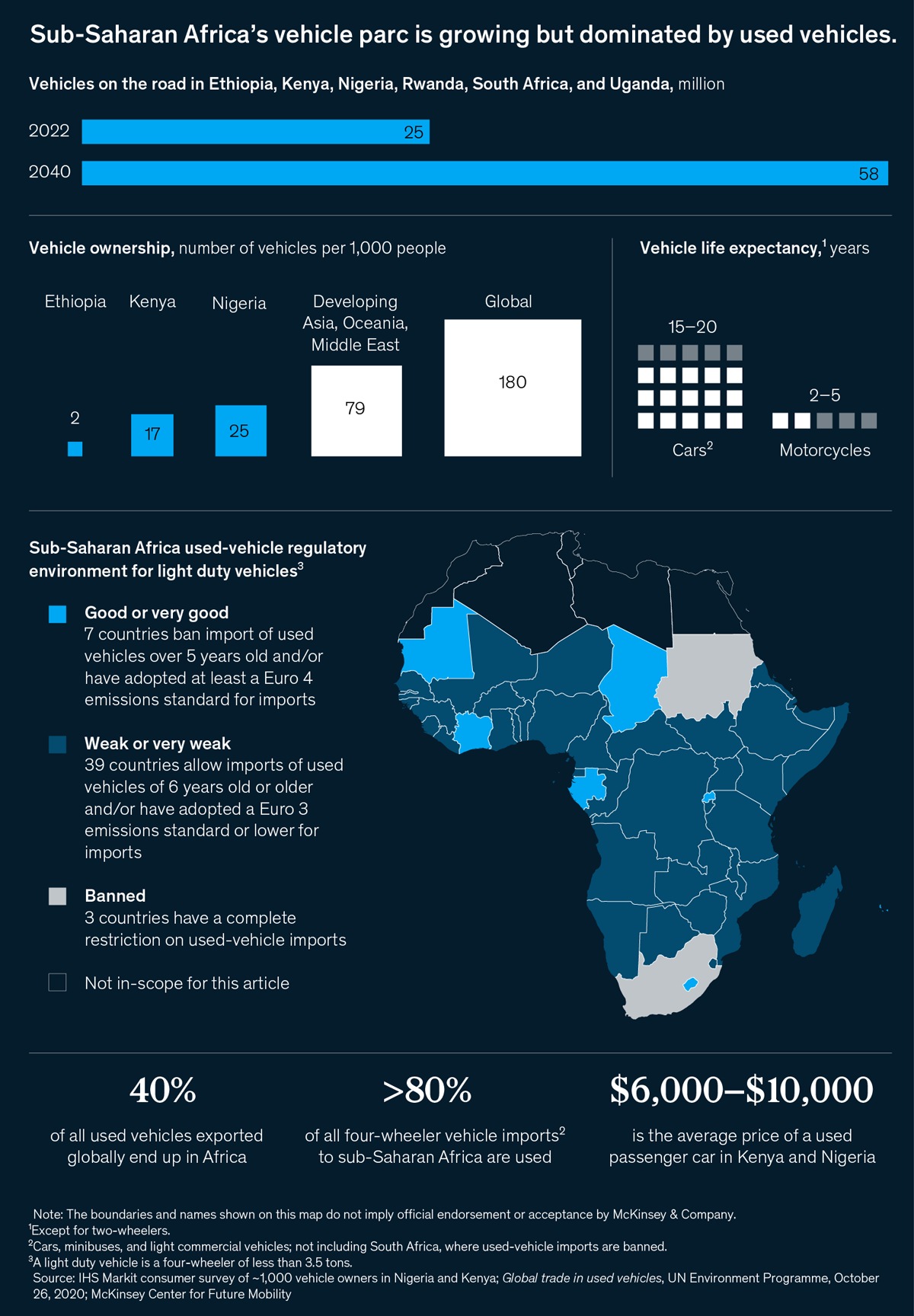
See today’s chart 
Also New 

Navigating the current disruption in containerized logistics Container freight rates will remain elevated throughout most of 2022 while the containerized logistics disruption persists. This article presents future scenarios that could help shippers in planning and offers levers to navigate through the disruption to emerge stronger. Bolster supply-chain resilience 


Global M&A market defies gravity in 2021 second half But what are the odds that M&A remains buoyant in the months ahead? Understand dealmaking trends 


Generating real-world evidence at scale using advanced analytics As pharma companies apply advanced analytics to generate new types of evidence, how do they decide which use cases to target and how to scale them up across the business? Dive into the possibilities 


Follow our thinking 



Share these insights Did you enjoy this newsletter? Forward it to colleagues and friends so they can subscribe too.
Was this issue forwarded to you? Sign up for it and sample our 40+ other free email subscriptions here.This email contains information about McKinsey’s research, insights, services, or events. By opening our emails or clicking on links, you agree to our use of cookies and web tracking technology. For more information on how we use and protect your information, please review our privacy policy. You received this email because you subscribed to the Daily Read newsletter. Manage subscriptions | Unsubscribe Copyright © 2022 | McKinsey & Company, 3 World Trade Center, 175 Greenwich Street, New York, NY 10007
by "McKinsey Daily Read" <publishing@email.mckinsey.com> - 06:47 - 23 Mar 2022 -
Are you ready to be a CEO?
Re:think
The biggest job We interviewed 67 CEOs for our new book, CEO Excellence (which I wrote with Scott Keller and Vikram Malhotra), and many of them said they were surprised at how ill prepared they felt when they stepped into those shoes. And these are the cream of the cream! We looked at 20 years of data on more than 2,400 public-company CEOs to find the very top performers. These top execs went in thinking they knew what to do, but when we asked them to look back, almost all of them said that they were surprised by what the job actually was and what it took to do it well.
One part of the surprise is that you have so much more to do that needs doing all the time. There are so many elements to the job, both internally and externally, and you must be on top of all of them all of the time. The breadth and the complexity of the role are unique, you’re doing it under more scrutiny than ever, and your decisions have more ripple effects than ever.
All the external stuff is so new and challenging. For example, once upon a time CEOs might have come into the job thinking that they just had to manage the relationship with the board, keep it at arm’s length, and let the members do their thing. But these excellent CEOs have discovered that this isn’t true at all. They learn how much the board can really help the business. Getting that out of a board takes a lot of time: you want to help the board evolve so that it has the right talent to advise a changing business; you have to give the directors the information they need to see the full context; you have to be radically transparent with them. That takes time.
I want to note one crucial mindset: the best CEOs come to understand that they should concentrate on the things that only they can do. What is the work that no one else is equipped to do? What are the things that only you, as the ultimate point of integration, can do? Those need to be the focus of your time. Everything else must be pushed out to others because there just aren’t enough hours in the day.
This email contains information about McKinsey’s research, insights, services, or events. By opening our emails or clicking on links, you agree to our use of cookies and web tracking technology. For more information on how we use and protect your information, please review our privacy policy.
You received this email because you subscribed to our McKinsey Quarterly alert list.
Copyright © 2022 | McKinsey & Company, 3 World Trade Center, 175 Greenwich Street, New York, NY 10007
by "McKinsey Quarterly" <publishing@email.mckinsey.com> - 03:32 - 23 Mar 2022 -
${mktmail.v_1}, join us for a magic show unlike any other!
Sumo Logic
Join Sumo Logic for “Mada’s Magical Marvels"

 Dear Mohammad,
Dear Mohammad,
Gather your family and join us for a 30 minute break full of fun and magical illusion with Mada’s Magical Marvels featuring “Mr. Magic,” Adam Mada.
Conjuring laughs from thin air and sharing the odd secret trick of the trade along the way this is a show like no other!
You’ll be on the edge of your seat, guessing what comes next!
Mada’s Magical Marvels
Thursday, March 31, 2022
4 p.m. AESTPlease confirm your attendance promptly to secure your seat and join Sumo Logic for some magical fun!
Take care,
The Sumo Logic TeamSumo Logic, Level 9, 64 York Street, Sydney, NSW 2000
© 2022 Sumo Logic, All rights reserved.Unsubscribe 


by "Sumo Logic" <marketing-info@sumologic.com> - 11:00 - 23 Mar 2022 -
How clean is that glass of water? The US is spending billions to fix aging H2O systems.
McKinsey&Company
Liquid gold .

Getting wise about water In the news • Salty water. Rising sea levels can not only cause floods and erode coastal communities but also, over time, cause salt water to leech into aquifers and contaminate drinking water. Academic researchers are looking closely at communities along the Gulf and Atlantic coasts to identify which water systems are most vulnerable to saltwater intrusion and how utilities might respond. “Smart” water systems, for instance, use wireless sensors to discover when salinity is high, enabling resource managers to shift to other water sources. [Scientific American] • Dried up. There’s no end in sight for the drought in the American West, which could potentially get worse over the coming months. A new US government forecast reveals “below-average precipitation is most likely” in the West. That’s more bad news for the region, where water shortages are already affecting many communities. Another study noted that between 2000 and 2021, the West was the driest it had been in 1,200 years. [CNN] 
Approximately ten million American households are without clean drinking water. 
On McKinsey.com • Pipes older than grandma. Much of the US’s water and wastewater infrastructure was built in the 1970s and 1980s. The average US water network pipe is 45 years old, with some cast-iron pipes more than a century old. And in certain communities, drinking water is unsafe because of lead and other contaminants. Throughout the nation, 400,000 schools and childcare centers don’t have access to clean drinking water. At the same time, US water systems lose six billion gallons of treated drinking water every day through leaks. • New funding flows. Over the next five years, the US Bipartisan Infrastructure Law provides a historic amount of new spending to update water infrastructure through two EPA programs. The approximately $30 billion allotted to the Drinking Water State Revolving Fund and the nearly $13 billion allocated to the Clean Water State Revolving Fund will help communities replace lead pipes, remove contaminants from water, and update water-treatment plants. Read the article for five ways government and business leaders can prepare for the incoming flow of capital. — Edited by Belinda Yu Care about clean water 
Was this forwarded to you? Sign up here. Or send us feedback — we’d love to hear from you. 

Follow our thinking 


This email contains information about McKinsey’s research, insights, services, or events. By opening our emails or clicking on links, you agree to our use of cookies and web tracking technology. For more information on how we use and protect your information, please review our privacy policy. You received this email because you subscribed to the On Point newsletter. Manage subscriptions | Unsubscribe Copyright © 2022 | McKinsey & Company, 3 World Trade Center, 175 Greenwich Street, New York, NY 10007
by "McKinsey On Point" <publishing@email.mckinsey.com> - 12:50 - 23 Mar 2022 -
What has your employer done for you lately?
McKinsey&Company
Make your workplace “sticky” .

Courting employees In the news • Ti amo, mon cheri. Amid a labor shortage, employers are attempting to motivate workers by offering them more than just a regular paycheck. That’s led employers to explore their employees’ “love languages,” or the forms of appreciation—such as praise, time off, or gifts—that mean the most to individual workers. Research indicates that workers who feel appreciated miss fewer days of work and are less likely to leave. [NYT] • Modern love. In industries where compensation is roughly equivalent among competitors, companies use benefits to lure talent. Employees today tend to characterize benefits packages that include remote-work options, unlimited PTO, and extensive healthcare coverage as “modern,” and traditional benefits (such as a set number of days off) as behind the times. About 80% of US workers say a flexible schedule is an important consideration when weighing a job offer. [Fortune] 
Those who voluntarily left their jobs cited experiences with uncaring leaders, unsustainable expectations of work performance, and lack of career advancement as factors in their decision. 
On McKinsey.com • Buh-bye. More than 4.3 million US workers voluntarily quit their jobs in December 2021—and many of them may not be that eager to return to the workforce. In a recent McKinsey survey of almost 600 workers who voluntarily left a job without another in hand, 44% said that they have little to no interest in returning to traditional jobs in the next six months. That’s a problem for businesses, since the number of current job openings exceeds the number of new hires by 4.6 million. • Love ’em or lose ’em. Reviewing compensation and benefits is just the first step to retain workers. Companies must also invest in building “sticky” workplaces by listening to employees, addressing their concerns, fostering a sense of community, and measuring outcomes. Find out why workers are leaving, why some are returning, and how to keep them for good. — Edited by Katy McLaughlin Show workers the love 
Was this forwarded to you? Sign up here. Or send us feedback — we’d love to hear from you. 

Follow our thinking 


This email contains information about McKinsey’s research, insights, services, or events. By opening our emails or clicking on links, you agree to our use of cookies and web tracking technology. For more information on how we use and protect your information, please review our privacy policy. You received this email because you subscribed to the On Point newsletter. Manage subscriptions | Unsubscribe Copyright © 2022 | McKinsey & Company, 3 World Trade Center, 175 Greenwich Street, New York, NY 10007
by "McKinsey On Point" <publishing@email.mckinsey.com> - 10:14 - 22 Mar 2022 -
Transforming supply chains: Do you have the skills to accelerate your capabilities?
the Daily read
Keep up .
Share this email 



AN ARTICLE A DAY, PICKED BY OUR EDITORS 
Supply chains are having a bit of a moment—are your company’s capabilities up to snuff? What will it take to accelerate them? Companies know they need workers who can manage today’s supply chains, bringing digital and analytics skills to bear, but it’s not always easy to find that talent. That’s where reskilling your company’s current employees could come in. A new article explores how to develop a robust capability-building program that aligns with strategic goals. Check out the formula. — Babi Oloko, digital editor, New York 
Transforming supply chains: Do you have the skills to accelerate your capabilities? Despite progress over the past several years, companies are still struggling to build the capabilities that their emerging digital supply chains will need. Keep up 

Quote of the Day "Our allies are critical in transforming our workplace. Any women’s movement needs to have men that are standing side by side, demanding the same things that we need." —Reshma Saujani, founder of Girls Who Code, on what men can do to help working mothers in a new Author Talks interview 
Chart of the Day 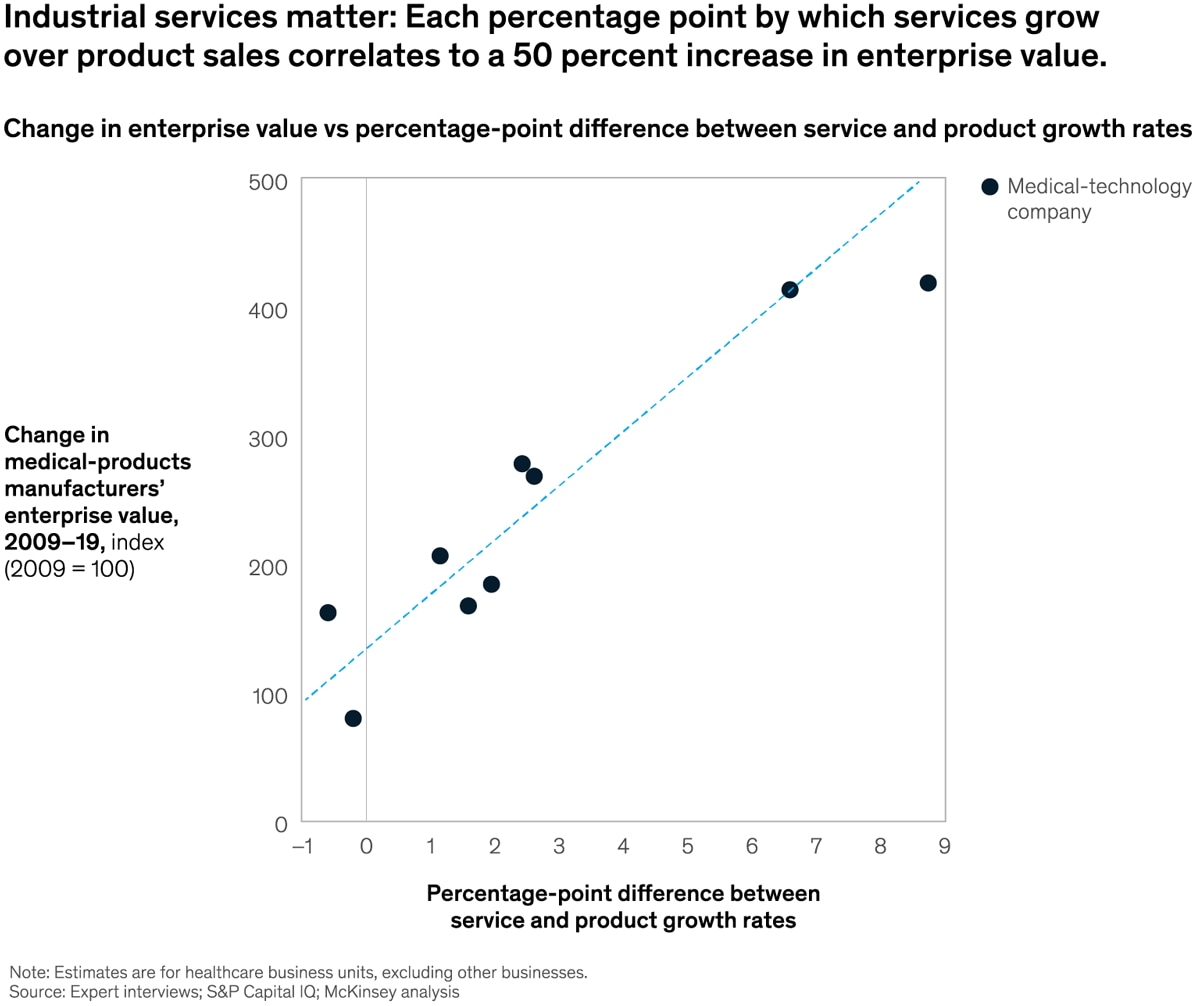
See today's chart 
Also New 

Beyond gender: Promoting diversity in French companies French companies want executives with diverse national origins and socioeconomic backgrounds. But they have had uneven success in achieving this goal. Work toward inclusivity 


Responsible product management: The critical tech challenge Prioritizing privacy, sustainability, and inclusion will soon be essential to successful tech development. For product managers to make responsible innovation a core discipline, companies must first lay the foundation. Step towards innovation 


The McKinsey Crossword: “Ouch!” | No. 68 Sharpen your problem-solving skills the McKinsey way, with our weekly crossword. Each puzzle is created with the McKinsey audience in mind, and includes a subtle (and sometimes not-so-subtle) business theme for you to find. Answers that are directionally correct may not cut it if you’re looking for a quick win. Play now 


Follow our thinking 



Share these insights Did you enjoy this newsletter? Forward it to colleagues and friends so they can subscribe too.
Was this issue forwarded to you? Sign up for it and sample our 40+ other free email subscriptions here.This email contains information about McKinsey’s research, insights, services, or events. By opening our emails or clicking on links, you agree to our use of cookies and web tracking technology. For more information on how we use and protect your information, please review our privacy policy. You received this email because you subscribed to the Daily Read newsletter. Manage subscriptions | Unsubscribe Copyright © 2022 | McKinsey & Company, 3 World Trade Center, 175 Greenwich Street, New York, NY 10007
by "McKinsey Daily Read" <publishing@email.mckinsey.com> - 06:14 - 22 Mar 2022 -
Control the noise, set up intelligent alerts in New Relic
New Relic
It’s easy to define the exact conditions to know when to worry.
Notify your teams
Configure an alert and we'll tell you when to worry. Define the conditions you want to know about and we'll notify you when something's wrong.
Configure an alert Why you should do this
To be alerted about performance issues before they impact customers. Prevent alert fatigue with intelligent incident management.What this does
Alerts let you set thresholds and receive notifications for changes in performance metrics across your entire stack.Common uses
- Email when a health ping fails
- Get a Slack message when response times increase
- Send a push notification when a host is running out of memory
Configure an alert If you have questions along the way, check our docs, community, or take a hands-on lab.
 View in browser
View in browser
Unsubscribe or Change Your Email Address and preferences at any time.
For information about our privacy practieces, see our Privacy Policy.
Need to contact New Relic? You can chat or call us at 888-643-8776.
New Relic, Inc. 188 Spear St, San Franciso, CA 94105.
© 2021 New Relic, Inc. All rights reserved.
New Relic logo are trademarks of New Relic, Inc.
by "Max from New Relic" <mfrancisco@newrelic.com> - 12:01 - 22 Mar 2022 -
Stick with the work you love
With Subscriptions, you and the talent you trust can stick to more success together.

Subscribe to better business Who has time to look for new talent at every project turn? You don’t.
With Subscriptions, you can set your best business activities on repeat.
From content, graphic, and video creation to website maintenance, SEO, and more, get recurring services from an expert you already trust with your brand and business goals.
With Subscriptions you can: Set expert services on repeat
Skip the back-and-forth and make sure your seller carves out time for you in advanceEnjoy exclusive discounts
Many sellers thank subscribers for their loyalty with discounts on their servicesTailor your orders to your needs
Get high quality services that suit your individual needs working for you behind the scenesReach out to your expert of choice to set up Subscriptions every month, week, or day – whatever works best to get the important work done! Repeat What Works Not sure yet if you’re ready? No worries! Try it out for a month and cancel anytime. 




Privacy Policy | Support | Invite a Friend | Get Inspired
This email was sent to you by Fiverr International Ltd.
You are receiving this email because you signed up for Fiverr.
If you wish to unsubscribe from all future emails, please click here
Fiverr International Ltd. | 38 Greene St. | New York, NY 10013, USA

by "Fiverr" <no-reply@fiverr.com> - 10:06 - 22 Mar 2022 -
Remote Connect 2022 is only 2 weeks away!
Remote Connect 2022 is only 2 weeks away!
We’ll have a lot more episodes featuring answers to questions like:
- How to scale a Finance team when you’re experiencing hypergrowth?
- How to remove barriers for engineering teams to work better remotely?
- Hiring abroad from France
more event sessions
Gathering In the New World of Work
Priya Parker, author and host of the NYT podcast Together Apart will share practical guidance on how to rethink and rebuild a post-pandemic approach to gathering.
Fostering well-being at work
Arianna Huffington, Founder & CEO of Thrive and one of Time’s 100 most influential people, will talk about the role and responsibility of leaders in improving the way we work.
You received this email because you are subscribed to Events communication from Remote Technology, Inc.
Update your email preferences to choose the types of emails you receive.
Unsubscribe from all future emailsRemote Technology, Inc.
Copyright © 2022 Remote Technology, Inc. All rights reserved.
18 Bartol St. #1163 San Francisco California
by "Remote" <hello@remote-comms.com> - 10:02 - 22 Mar 2022 -
Join us tomorrow for our webinar, “Accelerating Digital Transformation with Observability”
Hi Abul,
We would like to invite you to our virtual event, “Accelerating Digital Transformation with Observability,” which will take place tomorrow at 14:00 CET.
We will begin the session with a discussion on the challenges that organizations face during a cloud migration—from building a CCoE to adopting a strong DevOps culture. We will also examine how these organizations must adjust their monitoring strategies for their new cloud environments, and how this transformation can impact their growth, costs, and assumed risks.
This discussion will be followed by a product demo and a live Q&A session.
We look forward to hosting you virtually!
Cheers, Ali ShawTeam Lead, Sales Engineering
Ali ShawTeam Lead, Sales EngineeringVisit our email preference center to unsubscribe or change subscription options
©2022 Datadog Inc, 620 8th Ave, 45th Floor, New York, NY 10018This email was sent to info@learn.odoo.com.
by "Ali Shaw" <events@datadoghq.com> - 04:02 - 22 Mar 2022 -
Health equity: A framework for the epidemiology of care
the Daily read
Understand the issues .
Share this email 



AN ARTICLE A DAY, PICKED BY OUR EDITORS 
Better healthcare is an absolute good. But whose health concerns have we been solving for? The analysis changes as we think through an equity lens. Indeed, health inequities manifest in a variety of ways: limited access to food, care, or medication; unmet needs, when innovation is misaligned with disease burdens; or underserved communities, when key actors fail to engage groups commensurate with their needs. Addressing the issues has obvious benefits for patients—and the pharmaceutical and life sciences companies that serve them. A new article outlines a framework to approach health equity, recognize its limits, and sharpen decision making. Don’t miss it. — Torea Frey, managing editor, Seattle 
Health equity: A framework for the epidemiology of care Pharmaceutical and life sciences companies can unlock new opportunities, help underserved patients, and build a cycle of trust. Understand the issues 

Quote of the Day “Action to achieve sociocultural diversity—closely overseen by top management—must be part of a transformation project for the company as a whole. ... The mobilization of the management team and the whole organization must be strong and visible, both to employees and to external stakeholders such as consumers, investors, the media, and the general public.” —See what organizations can do to promote sociocultural-diversity initiatives in “Beyond gender: Promoting diversity in French companies” 
Chart of the Day 
See today’s chart 
Also New 

War in Ukraine: Lives and livelihoods, lost and disrupted As uncertainty weighs on decision making, scenarios can provide guidance. Understand the implications 


Germany’s e-health transformation makes uneven progress Our eHealth Monitor report shows solid uptakes of telemedicine and consumer health apps. But e-prescriptions, health data exchange, and patient use of electronic health records are lagging behind. Understand the trends 


Building next-generation B2B sales capabilities The pandemic has converted B2B buyers to e-commerce in a big way. B2B sellers need new capabilities to meet their new expectations. Deliver outperformance 


Follow our thinking 



Share these insights Did you enjoy this newsletter? Forward it to colleagues and friends so they can subscribe too.
Was this issue forwarded to you? Sign up for it and sample our 40+ other free email subscriptions here.This email contains information about McKinsey’s research, insights, services, or events. By opening our emails or clicking on links, you agree to our use of cookies and web tracking technology. For more information on how we use and protect your information, please review our privacy policy. You received this email because you subscribed to the Daily Read newsletter. Manage subscriptions | Unsubscribe Copyright © 2022 | McKinsey & Company, 3 World Trade Center, 175 Greenwich Street, New York, NY 10007
by "McKinsey Daily Read" <publishing@email.mckinsey.com> - 06:10 - 21 Mar 2022









